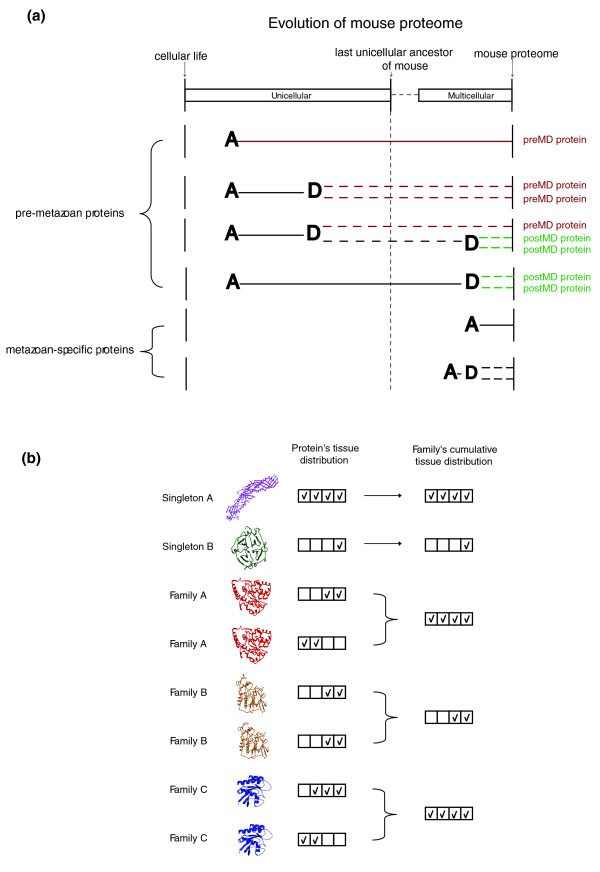Figure 1.

A schematic illustration of concepts described in the text. (a) Proteins illustrating different aspects of phyletic age/time of duplication in the mouse proteome, when the calibrated time is the transition from unicellularity to multicellularity. 'A' represents the appearance of a protein in the mouse proteome, and 'D' is a duplication event, leading to the retention of both copies in the mouse proteome. The appearance of a novel protein relates to events where protein contains a novel combination of domains or to events where a protein sequence was changed beyond the recognition of traditional sequence search algorithms, and therefore there is a high likelihood that the protein performs a new function. Pre-metazoan mouse proteins are proteins that have descended from a protein present in the unicellular ancestor of mouse; metazoan-specific proteins are proteins that are unique to the multicellular lineage of metazoa. Because all duplications of metazoan-specific proteins are bound to take place after the transition to multicellularity, proteins from this group are not classified into groups of time of duplication (preMD/postMD). (b) Building a cumulative expression profile for protein families. The cumulative expression profile of each family was built by recording all tissues in which at least a single family member is expressed. Singleton proteins, by definition, are single member families and the cumulative distribution is identical to the protein distribution. Family A is an example of complementary expression with no expression overlap between the duplicate proteins; family B is an example of identical expression; and family C is an example of complementary expression with partial expression overlap. The protein cartoons used in this figure are only illustrative. postMD, post-multicellularity duplicates; preMD, pre-multicellularity duplicates.
